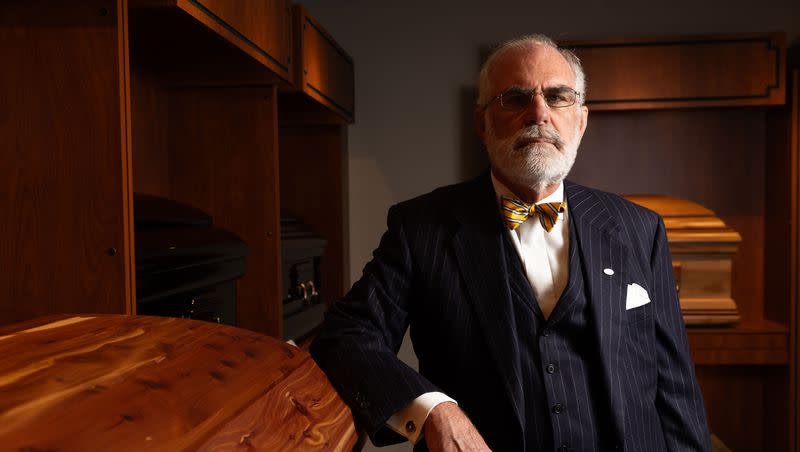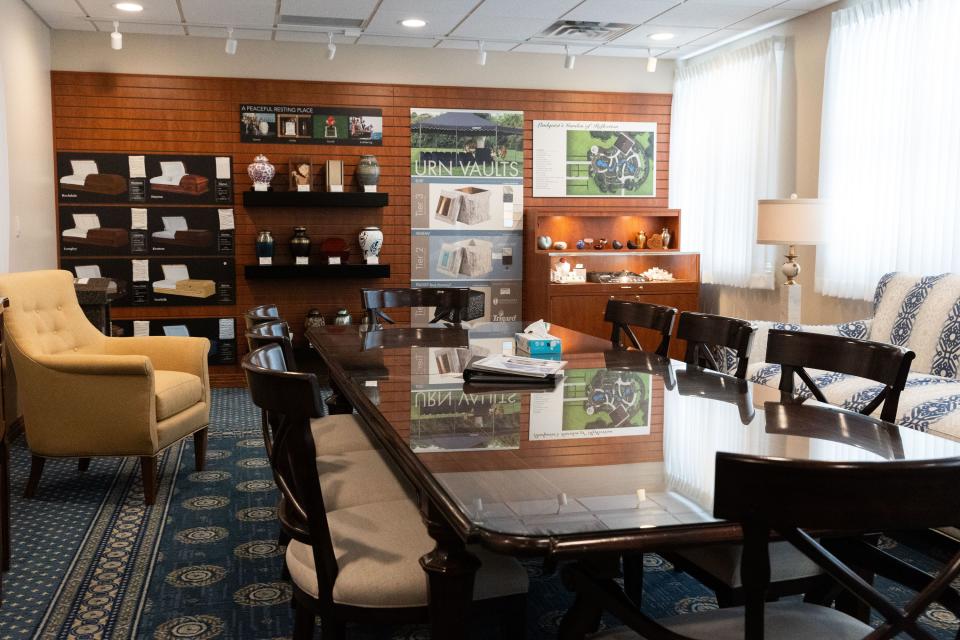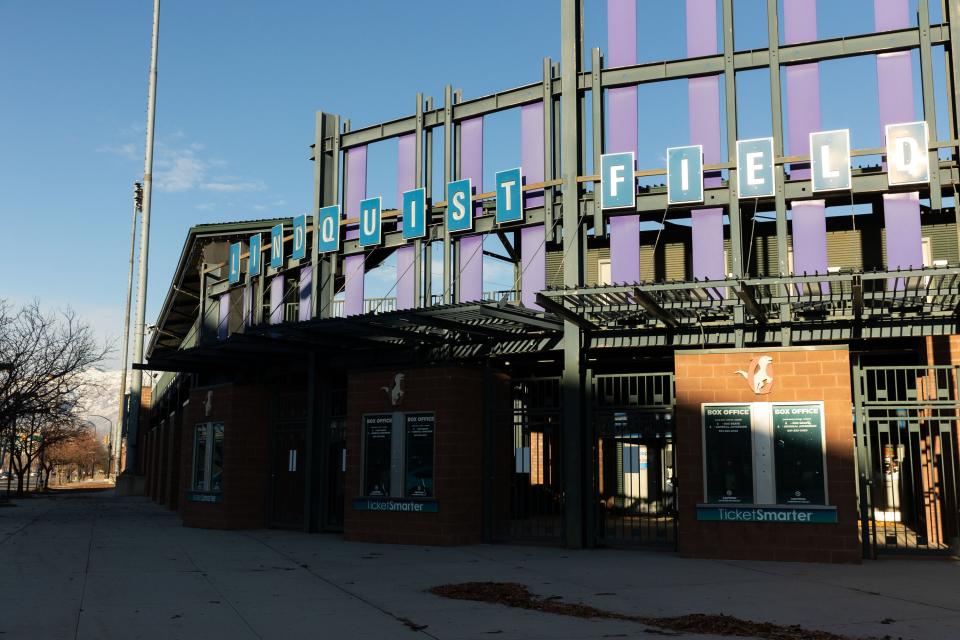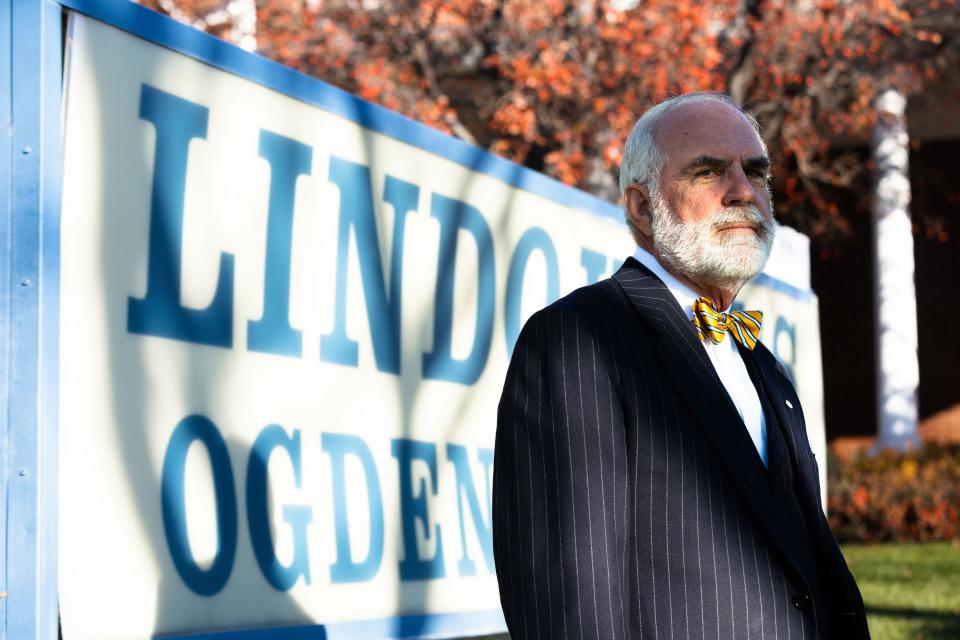For 156 years, Lindquist morticians have looked forward

- Oops!Something went wrong.Please try again later.
“Progressive.”
We’re sitting in a glossy showroom surrounded by caskets, soothing music and inspirational signs of comfort on the walls, asking John E. Lindquist if he can pinpoint why Lindquist Mortuaries, the family business he is the current caretaker of, has managed to survive through 151⁄2 decades with no signs of, pardon the pun, dying.
Without hesitating, his response is the word above.
“We’re a progressive bunch, always have been,” the undertaker says. “Lindquists look forward. I think that’s the secret to our success.”
It goes back to the very beginning, 156-plus years ago, when the original Lindquist, a furniture maker fresh off the boat from Sweden named Nils, was asked by Brigham Young to take his family and move to the hinterlands, which in 1867 meant “Logan.”
The fledgling communities in Cache Valley needed good furniture, Young told Nils, and they also needed someone to make caskets.
Being a dutiful Latter-day Saint — the church was the reason he immigrated to Utah — Nils did as he was asked and headed north.
At first, he discovered there was a brisk business for his custom-made furniture. But then came the completion of the intercontinental railroad in 1869, followed by a spur to Logan in 1873, and demand suddenly dried up because people started ordering fancy hardwood furniture from the East Coast.
But for coffins, there was no downturn.
Furniture-making soon phased out of the family business, eclipsed by coffin-making and other services associated with burying the dead, including embalming and arranging funerals.

In 1885, Nils’s son, Charles J.A., eliminated the coffin-making part — choosing instead to buy caskets from other manufacturers — and moved the business to Ogden, where ever since it has been adroitly adapting, adjusting and changing with the times.
During the recent pandemic, for example, the increased death rate coupled with supply chain snarls resulted in a severe casket shortage all over the country. Most mortuaries didn’t have enough to keep pace.
But not Lindquist. Ever since another world event, World War II, caught mortuaries with a similar casket shortage, Lindquist had made it a practice to keep hundreds of caskets in its inventory — a kind of rainy day casket fund — in case something like that ever happened again.
It took nearly 75 years, but something like that happened again. Not only did Lindquist have enough caskets in reserve for its own needs during the pandemic, it was also able to loan caskets out to other mortuaries.
For another example of being progressive, Lindquist was the first mortuary in Utah to build its own cemeteries (it now has three); for yet another, as attitudes toward cremation have changed through the years, it was the first mortuary in the state to build its own crematorium (it now has two).
“World events change the funeral business, sometimes drastically,” says John E. “Through all the changes, what we always try to remember is that we’re here to serve people. Whatever they want, that’s what we want.”
It’s an attitude that has kept Lindquist’s doors open for 156 years and counting, making it not only Utah’s oldest mortuary company, but what is believed to be the third oldest business in Utah, exceeded only by the Deseret News (1850) and Daynes Music Co. (1862).
“All this from coffin makers,” muses John E.
Besides prosperity, philanthropy is the byproduct of this kind of staying power. In Ogden and surrounding area, the Lindquist name is known for more than burying people.
There’s Lindquist Hall, the largest building on campus, the Lindquist Student and Conference Center and the Lindquist Alumni Center — structures at Weber State University that have been funded largely by the Lindquists. There’s the Lindquist Pops Concert and Fireworks Show, a popular Ogden ritual held every July that is hosted, and underwritten, by the family.

Perhaps most prominently, there’s Lindquist Field in downtown Ogden, home to the Ogden Raptors of the Pioneer League. In 1997, when the baseball team was uprooted from Salt Lake and looking for a home, John E. Lindquist stepped up and donated a good share of the $5 million that was needed to build the ballpark — and was the driving force in helping raise the rest.
“Giving back has always been important to us,” says John E., and by “us” he means all five generations of Lindquists who have kept the family business afloat. First to lead the company was Nils, followed by Charles J.A., then John E.’s father John A., then John E., who is 75. Waiting in the wings, representing the fifth generation, is John E.’s son McClain, 46, who is currently vice president, along with John E.’s nephew, Robert Lindquist Jr.
It’s been more than a century and a half since Nils Lindquist established Lindquist Furniture & Undertaking in 1867. He’d hardly recognize what the kids have done with it. But then, that’s the reason it’s still alive.


